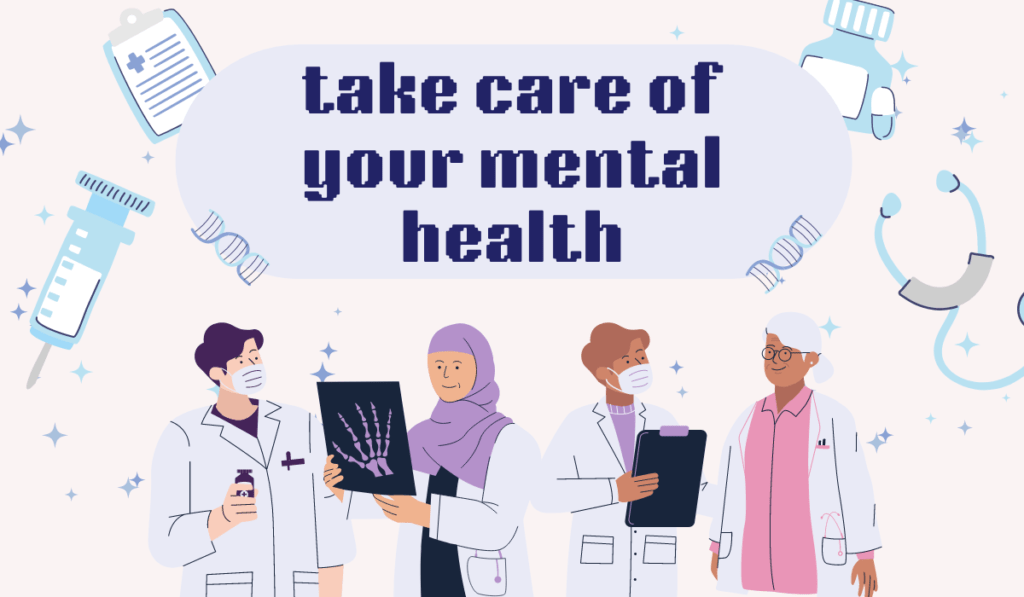Mental resilience and emotional well-being are cornerstones of a happy, productive life. In the increasingly complex world we navigate daily, the importance of self-improvement is undeniable. This article aims to explore practical techniques that foster mental strength and emotional balance, equipping you with tools to handle the pressures of modern living.
understand mental resilience and emotional well-being
The phrase “mental toughness” refers to an individual’s ability to adapt and bounce back from the tough times. This means dealing with difficult situations, managing emotions effectively and staying positive even in the face of failure.
Emotional well-being encompasses a person’s overall emotional health and happiness. It involves having fulfilling relationships; being aware of one’s own feelings and able to control them; feeling purposeful and satisfied with life while also being able to cope well with its ups and downs.
Mental resilience and emotional well-being are words used jointly that describe a comprehensive approach towards psychological fitness which puts emphasis on cultivating positive emotions as well as general welfare among individuals while also equipping them with necessary skills to withstand stressors or adversities.
1. Establishing a Mindful Routine
Defining Mindfulness
Mindfulness means maintaining a moment-by-moment awareness of our thoughts, feelings, bodily sensations, and surrounding environment. It involves acceptance, meaning we pay attention to our thoughts and feelings without judging them.
Daily Practices
Incorporate mindfulness into daily activities like eating, showering, or walking. Focus intensely on the present experience, observing every detail and sensation involved. This is best practice to boost mental resilience and emotional well-being
Long-Term Benefits
Regular mindfulness practice helps decrease stress and anxiety, improving your ability to respond to adverse situations calmly and thoughtfully.
2. The Role of Physical Exercise
Exercise and Mental Health
Physical activity boosts endorphins, which improve mood and energy levels, playing a crucial role in mental health management.
Types of Exercise
Engage in activities you enjoy, whether it’s yoga, running, or team sports, to sustain motivation over the long term.
Routine Building
Incorporate physical activity into your daily routine. Even short 10-minute increments can significantly benefit mental and emotional health.
3. Developing Healthy Sleep Habits
Importance of Sleep
Quality sleep is essential for proper brain function and emotional regulation. Inadequate sleep can lead to high stress and low mood.
Improving Sleep Quality
Create a relaxing bedtime routine. Avoid screen time before bed and ensure your sleeping environment is dark and cool.
Sleep and Recovery
Consider sleep as essential recovery time for your mind. Respect it as you would a key component of your health regimen.

4. Effective Communication Skills
Listening Skills
Enhance understanding and empathy by really listening to what others are saying, not just preparing to speak.
Expressing Needs
Learn to communicate your thoughts and feelings clearly and assertively without aggression. This clarity reduces misunderstanding and builds stronger relationships.
Conflict Resolution
Approach disagreements with the intent to resolve them constructively. Focus on the issue, not the person, and seek a resolution that benefits all parties.
5. Journaling for Emotional Clarity
Benefits of Journaling
Writing helps to process thoughts and feelings, providing stress relief and self-awareness.
Journaling Styles
Experiment with different formats—bullet journals, diaries, or gratitude lists—to find what best helps you process your emotions.
Regular Reflection
Set a regular schedule to journal. This consistency helps deepen self-awareness and emotional processing.
6. Nutritional Impact on Mental Health
Brain Food
Foods rich in omega-3 fatty acids, antioxidants, and vitamins can enhance cognitive function and emotional balance.
Dietary Tips
Integrate a balance of nutrients in your diet, focusing on vegetables, fruits, whole grains, and lean proteins.
Avoiding Pitfalls
Be mindful of sugar and caffeine intake, which can have roller-coaster effects on mood and energy levels.
7. Building Strong Relationships
Support Networks
Develop relationships that provide mutual support, understanding, and trust—essential elements for mental and emotional well-being.
Healthy Boundaries
Learn to say “no” when necessary and communicate your limits clearly. Because sometimes saying no to wrong gives you the ultimate satisfaction
Giving and Receiving
Balance between offering support to others and allowing yourself to receive it, fostering healthy, supportive interactions.
8. Time Management and Stress Reduction
Prioritizing Tasks
List daily tasks in order of importance, and tackle them according to priority. This approach reduces the stress of feeling overwhelmed.
Reducing Clutter
Minimize both physical and mental clutter to enhance focus and reduce anxiety.
Leisure and Downtime
Schedule regular breaks. Leisure is not a luxury but a necessity for mental resilience and creativity.
9. Setting and Achieving Goals
Short-term Goals
Set small, manageable goals to build confidence and momentum. because big goal are hard to achieve and you will get tired and will lost your momentum
Long-term Ambitions
Define broader aspirations and create a step-by-step plan to reach them, keeping flexibility to adjust as needed.
Celebrating Milestones
Acknowledge and celebrate each achievement. This recognition boosts your motivation and commitment.

10. Seeking Professional Help
Identifying the Need
Recognize when you need help beyond self-care—persistent feelings of sadness or anxiety might be signs.
Types of Therapies
Explore various therapies like CBT or psychotherapy to find what resonates best with your needs.
Integrating Therapy
Combine professional advice with these self-help techniques to maximize your emotional resilience.
summary
Remember, the journey to enhanced mental resilience and emotional well-being is continuous and varies widely among individuals. Embrace these techniques, adjust as necessary, and commit to sustained self-improvement.
Mental resilience and emotional well-being can be managed with the aid of self-care practices and overall lifestyle adjustments. Building resilience to the stresses in life that you are unable to completely remove requires self-care. Many of these methods are based on fundamental ideas that are simple to overlook.
Enhanced self-awareness is necessary for mental resilience and emotional well-being. Gaining self-awareness can assist you in identifying emotional patterns in yourself and in situations that may exacerbate your symptoms. It can also relieve unpleasant symptoms of a mental disease or stress, assist you discover the jobs or activities that are essential for your well-being, or just be enjoyable or relaxing.
FAQs
What is the first step toward building mental resilience?
Start by establishing a mindful routine that can help you stay connected to the present moment.
How often should I exercise to improve my emotional well-being?
Aiming for at least 150 minutes of moderate-intensity exercise per week is a widely recommended guideline.
Can journaling replace therapy?
Journaling is a supplemental tool; it can be profoundly therapeutic but is not a replacement for professional psychological treatment.
What are the signs that I might need professional help for my mental health?
Persistent sadness, anxiety, or disruptions in sleep or appetite are significant indications.
How can I maintain consistency in my self-improvement efforts?
Set realistic goals, create routines, and adjust your strategies as you gain insight into what works best for you.


